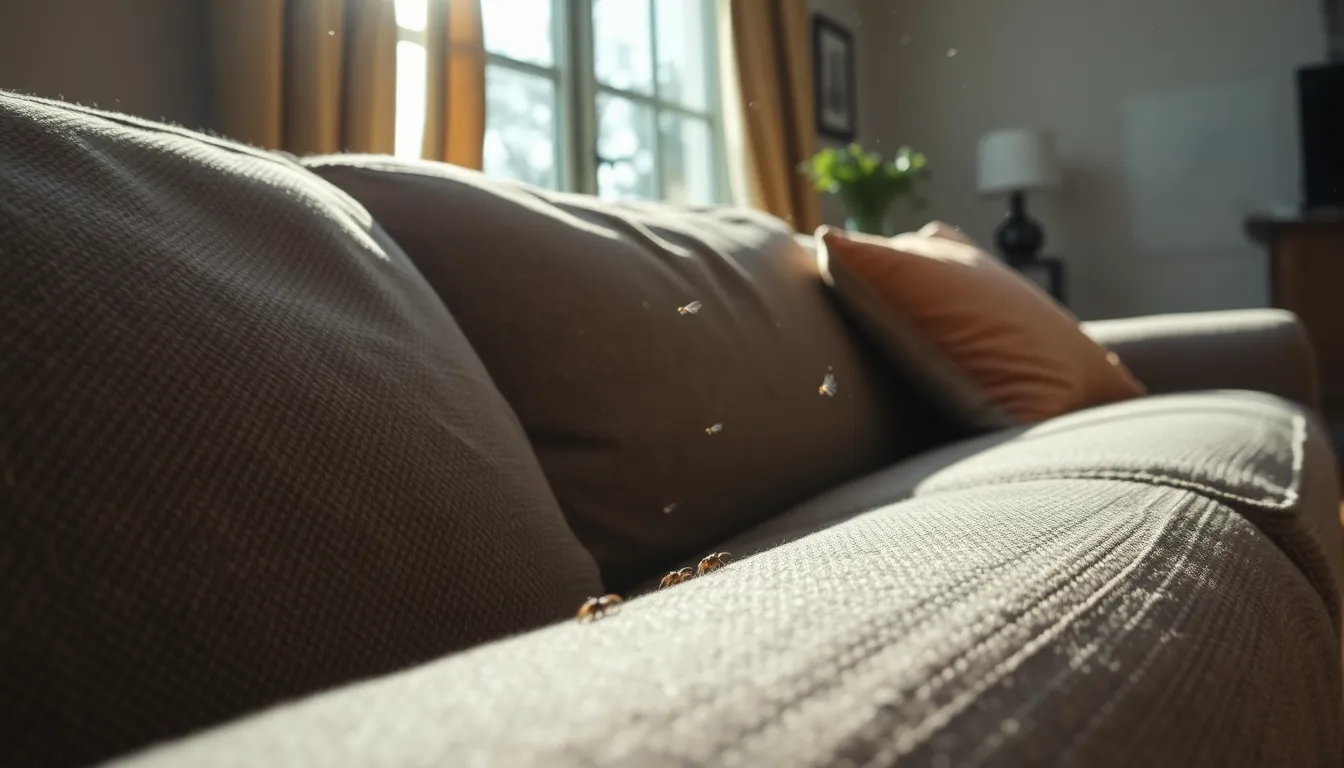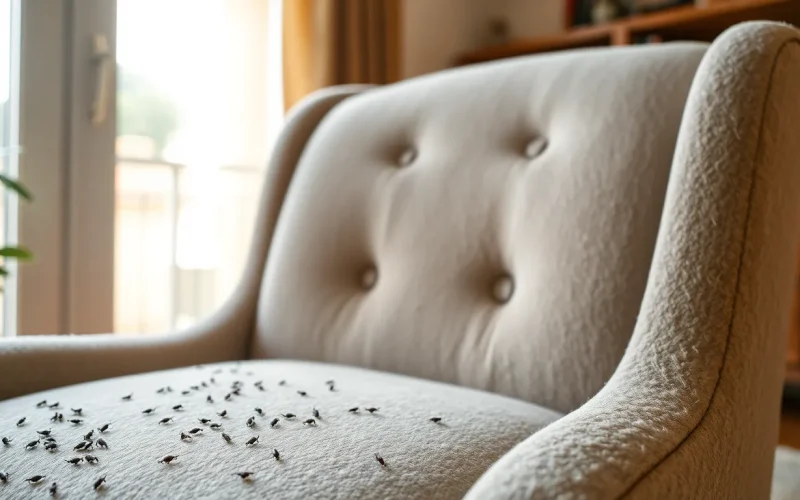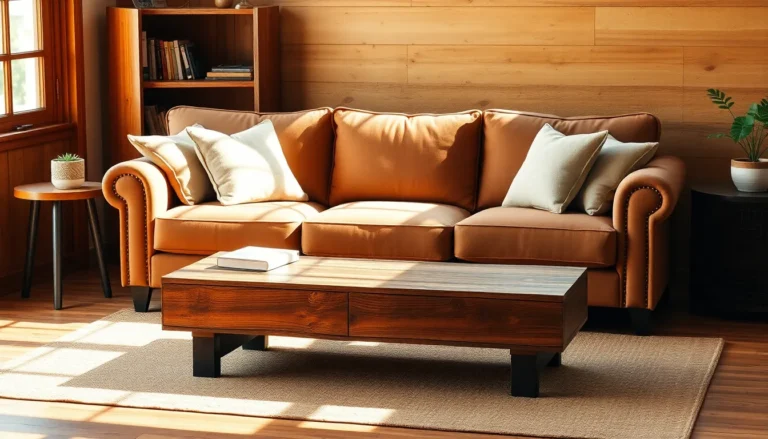Table of Contents
ToggleFleas are the uninvited guests that just won’t leave, and they’ve got a knack for turning your cozy furniture into their personal five-star resort. Ever wondered how long these tiny nuisances can crash on your couch or snuggle into your favorite armchair? Spoiler alert: it’s longer than you might think!
Understanding Flea Lifespan
Fleas can thrive in homes for extended periods. Understanding their lifespan provides insight into effective management strategies.
The Life Cycle of Fleas
The flea life cycle consists of four stages: egg, larva, pupa, and adult. Eggs, usually laid on the host or nearby surfaces, hatch within 2 to 14 days. Larvae feed on organic debris, developing for 5 to 20 days. Then, larvae pupate into cocoons that can remain dormant for several months. Once environmental conditions are favorable, adult fleas emerge, ready to find a host. This cycle can take as little as 3 weeks, meaning infestations can escalate quickly.
Factors Affecting Lifespan on Furniture
Flea lifespan on furniture varies based on multiple factors. Humidity levels significantly influence survival; fleas thrive in environments with 50% to 75% humidity. Temperature also plays a critical role, with fleas flourishing between 70°F and 85°F. Additionally, the presence of food sources, specifically warm-blooded animals, can extend flea life. Without these conditions, fleas may live only a few days. Understanding these factors helps target and eliminate flea populations effectively.
Conditions for Fleas on Furniture

Fleas thrive in specific environments, particularly on furniture. Understanding these conditions helps to determine how long fleas can survive.
Temperature and Humidity
Temperature significantly influences flea longevity on furniture. Fleas flourish at temperatures between 70°F and 85°F. Humidity plays an important role as well; environments with 50 to 70 percent humidity support flea survival and reproduction. Inadequate humidity leads to dehydration, shortening their lifespan. Conversely, extreme heat or cold can eliminate fleas rapidly. Maintaining steady warmth and moisture becomes crucial for fleas to inhabit furniture effectively.
Type of Furniture Material
The material of furniture affects flea persistence. Fabric materials like upholstery and carpets hold fleas better than smooth surfaces. Fleas tend to hide in the fibers of those fabrics, increasing their chances of survival. Wood and metal surfaces pose challenges for flea habitation, as these materials offer fewer hiding spots. Cleaning and vacuuming furniture regularly shifts the odds in favor of eradication, disrupting flea life cycles. Furniture that accumulates dust or pet hair serves as a potential breeding ground, giving fleas an opportunity to thrive.
Signs of Flea Infestation
Flea infestations on furniture present clear signs that require attention. Identifying these indicators early ensures effective management and reduces the chance of rapid population growth.
Identifying Fleas on Furniture
Fleas are often visible as tiny, dark brown or black insects. They jump quickly and can be challenging to catch. Adult fleas usually measure 1/16 to 1/8 inch in length and have slender bodies. Inspecting pets is also essential since fleas tend to congregate in fur. Signs of flea feces, which appear as tiny black specks, may also indicate their presence. Look for these specks on furniture fabric or near pet resting areas.
Other Indicators of Infestation
Other indicators include itching pets and discomfort among household members. Pets may scratch excessively or develop hair loss due to flea bites. Humans might notice red, itchy welts on their skin. Increased sightings of flea eggs, resembling tiny white grains, may also signal an infestation. Check around furniture corners or under cushions for these eggs. Overall, recognizing these signs helps in taking timely action against fleas.
Prevention and Control Measures
Keeping fleas at bay requires a mix of regular cleaning and effective treatment strategies.
Cleaning and Vacuuming Strategies
Frequent cleaning plays a crucial role in flea prevention. Vacuuming furniture should occur at least once a week, focusing on upholstery, cushions, and crevices. Disposing of vacuum bags or emptying canisters immediately reduces the risk of re-infestation. Using a vacuum equipped with a HEPA filter traps fleas effectively. Washing pet bedding and any washable fabrics in hot water eliminates fleas, eggs, and larvae. Regularly sweeping and mopping hard surfaces also contributes to a flea-free environment. Preventive measures should extend to removing clutter, which can provide hiding spots for these pests.
Treatment Options for Infested Furniture
Various treatment options exist for tackling flea infestations on furniture. Using insecticides labeled for flea control can target adult fleas and their eggs. Look for treatments containing ingredients like permethrin or pyriproxyfen. Steam cleaning furniture offers a chemical-free alternative that can kill fleas in all life stages. Natural remedies, such as diatomaceous earth, can be sprinkled on affected areas and vacuumed after a few hours. Additionally, consulting pest control professionals may provide tailored solutions when infestations become severe. Fumigation or specialized treatments can effectively eradicate fleas from entire households.
Fleas can be a persistent nuisance in homes and their ability to thrive on furniture is a significant concern. Understanding their life cycle and the conditions that extend their lifespan is crucial for effective management. Regular cleaning and proactive measures can disrupt their development and prevent infestations. By recognizing the signs of fleas early and implementing targeted strategies, homeowners can protect their living spaces from these unwelcome pests. Taking action not only ensures a more comfortable environment but also promotes the well-being of pets and family members alike.





